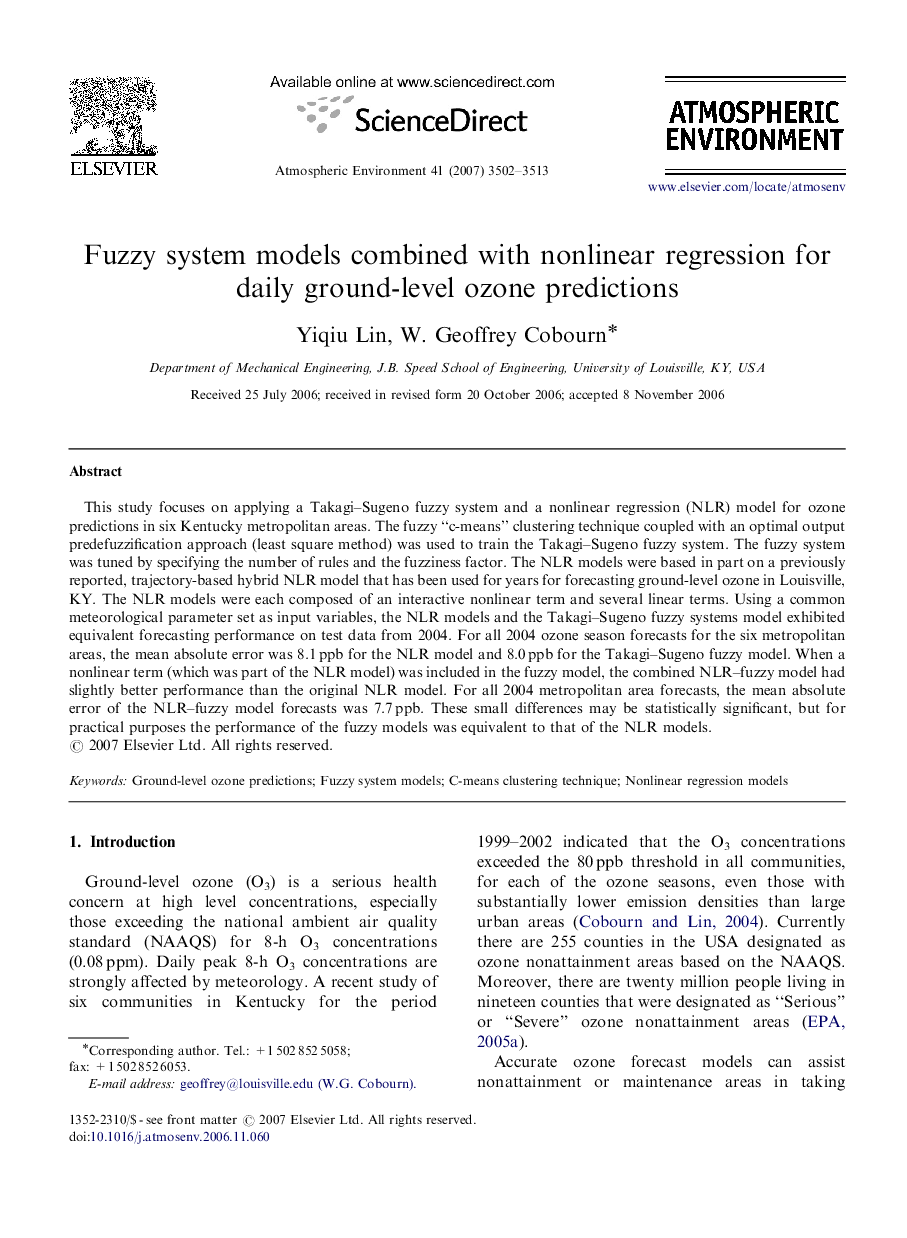| Article ID | Journal | Published Year | Pages | File Type |
|---|---|---|---|---|
| 4443728 | Atmospheric Environment | 2007 | 12 Pages |
This study focuses on applying a Takagi–Sugeno fuzzy system and a nonlinear regression (NLR) model for ozone predictions in six Kentucky metropolitan areas. The fuzzy “c-means” clustering technique coupled with an optimal output predefuzzification approach (least square method) was used to train the Takagi–Sugeno fuzzy system. The fuzzy system was tuned by specifying the number of rules and the fuzziness factor. The NLR models were based in part on a previously reported, trajectory-based hybrid NLR model that has been used for years for forecasting ground-level ozone in Louisville, KY. The NLR models were each composed of an interactive nonlinear term and several linear terms. Using a common meteorological parameter set as input variables, the NLR models and the Takagi–Sugeno fuzzy systems model exhibited equivalent forecasting performance on test data from 2004. For all 2004 ozone season forecasts for the six metropolitan areas, the mean absolute error was 8.1 ppb for the NLR model and 8.0 ppb for the Takagi–Sugeno fuzzy model. When a nonlinear term (which was part of the NLR model) was included in the fuzzy model, the combined NLR–fuzzy model had slightly better performance than the original NLR model. For all 2004 metropolitan area forecasts, the mean absolute error of the NLR–fuzzy model forecasts was 7.7 ppb. These small differences may be statistically significant, but for practical purposes the performance of the fuzzy models was equivalent to that of the NLR models.
